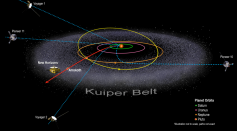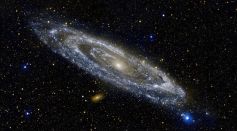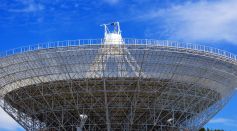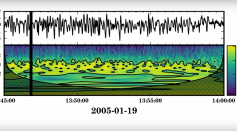Tags: Solar System
Carbon-Rich Water Discovered in Ancient Meteorite Provides Clues to Solar System's History

Pluto New Horizons Spacecraft Share Stunning Image As It Approaches Milestone Distance
Most Pristine Interstellar Comet Discovered in New Research

Did NASA Just Discover a Magnetic Field in Sun’s Chromosphere?

NASA Parker Solar Probe Spacecraft Will Finally Go the Sun To Take a Photo of Six Planets
Water Ice Mapped Across Northern Part of Ganymede, the Largest Moon in the Solar System
Scientists Discovered Plasmoids in Uranus From Voyager 2's Data From 30 Years Ago
Using a Single Image, Scientists Changed People’s Insight of the Sun
Moon Found to Have Far More Craters than Most People Thought
Chance of Life on Closest Habitable Solar System to Earth Just Got Slimmer
Every Planet In the Solar System Will Appear This Week, Even Ex-Planet Pluto
Planet Between Saturn And Uranus Was Kicked Out of The Solar System, Scientists Say

Five Stellar Yet Extreme Facts About Space

Other Stars Can Support Up To Seven Habitable Planets

Earth Might Have Been Formed Faster, New Research Suggests
Phenomenal Images of the Sun's Surface Were Captured From Retired Photographer's Backyard
The Snowman: Discovering Objects Beyond Pluto

The Search for Extraterrestrial Intelligence Heightens
What Happens When Andromeda Galaxy Crashes Into The Milky Way?

Earth's Magnetic Field Produces Music During a Solar Storm
Most Popular

The Strongest Tornadoes Ever Recorded: Scientific Breakdown of Extreme Tornado Events

Can Scientists Predict Earthquakes? The Latest Advances in Seismic Forecasting Explained

How Space Affects the Human Body: Key Health Challenges Impacting the Astronauts

Photosynthesis Made Easy: Light Reactions, Calvin Cycle, and Everyday Examples




